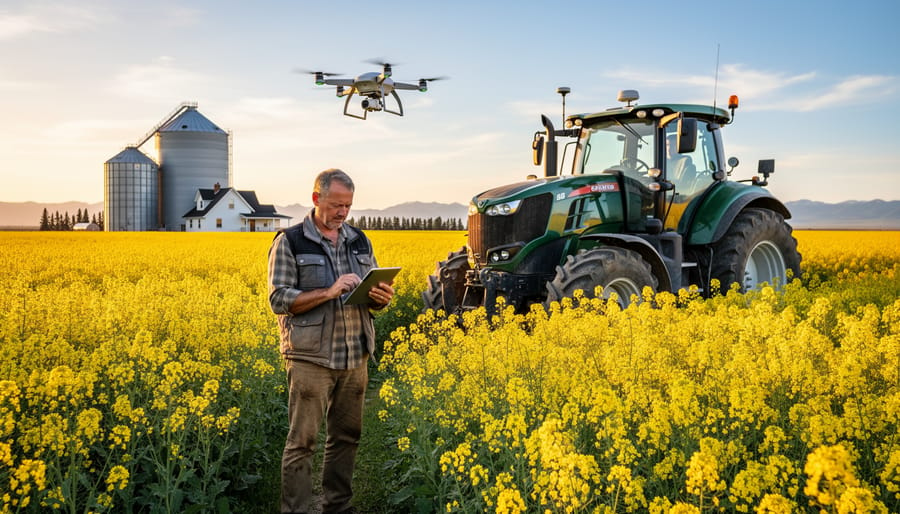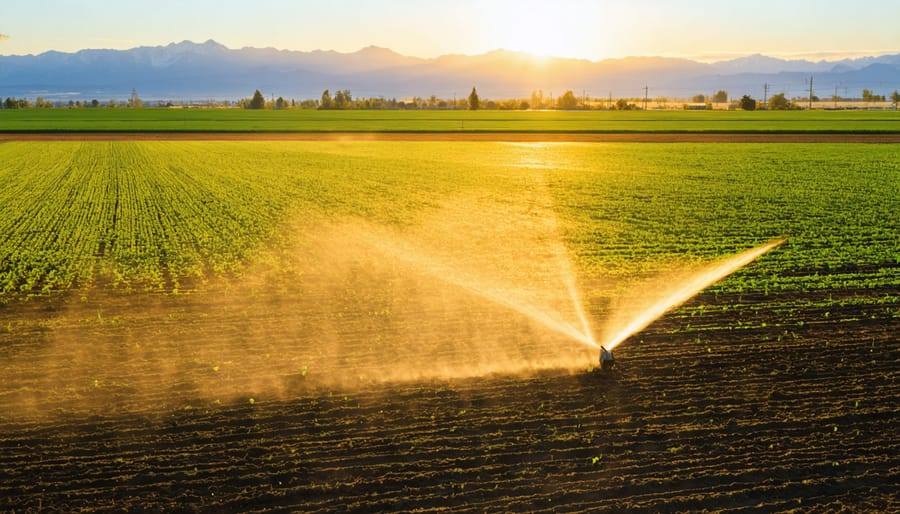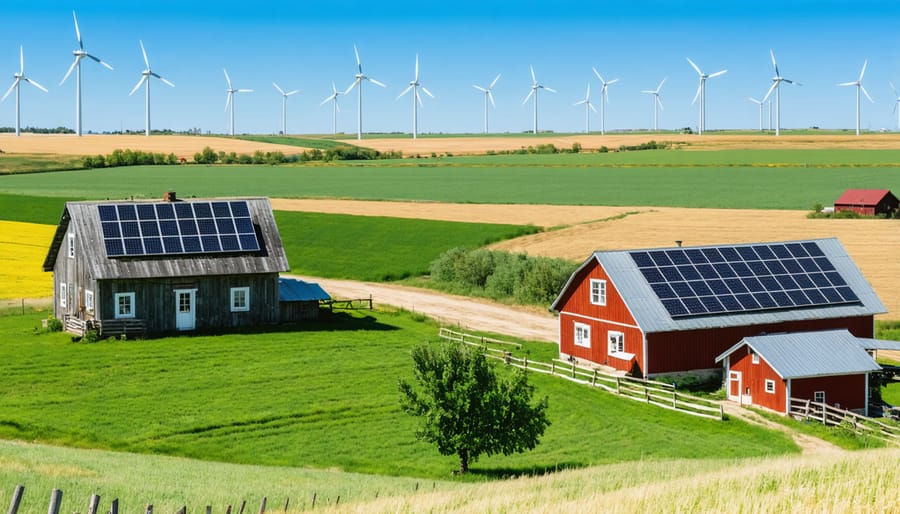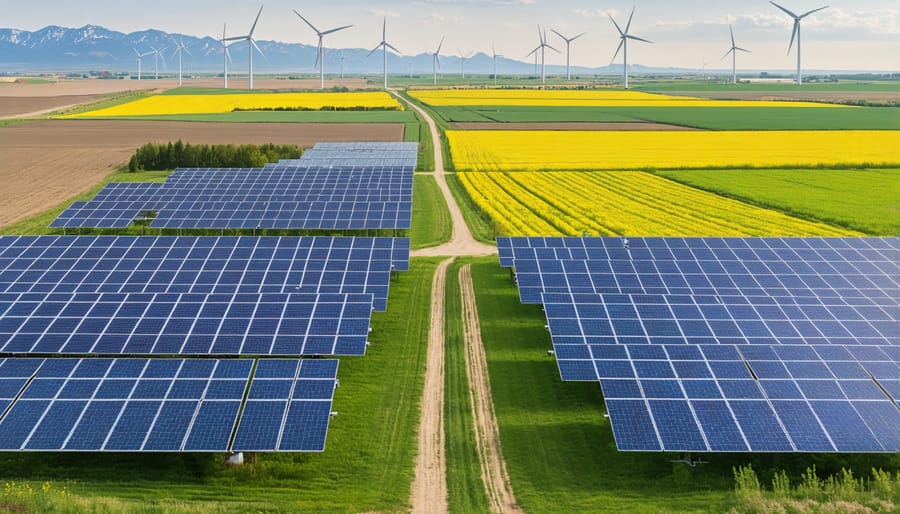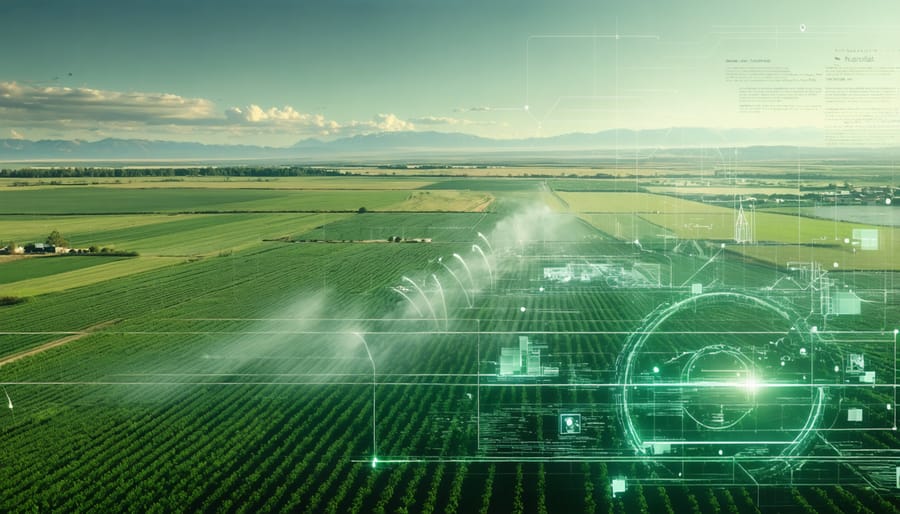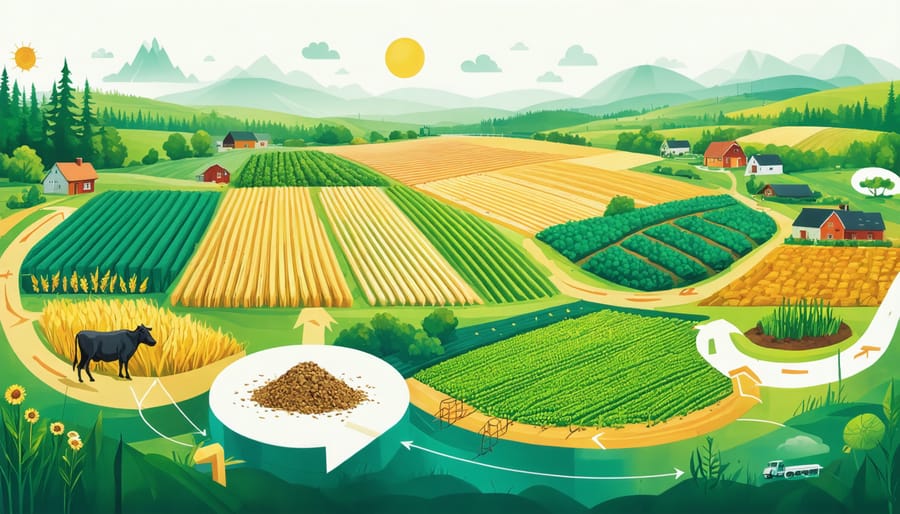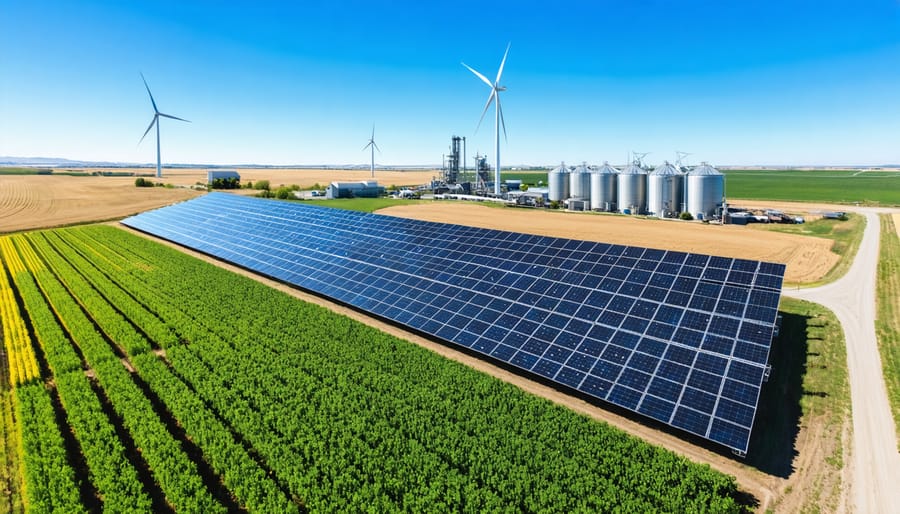The Rural Digital Opportunity Fund (RDOF) stands as a transformative $20.4 billion initiative empowering Canadian farmers to bridge the digital divide and revolutionize their operations. As the digital transformation of family farms accelerates across Alberta, this funding program offers unprecedented support for high-speed internet infrastructure, precision agriculture technology, and smart farming solutions.
For rural communities struggling with connectivity, RDOF provides a vital pathway to compete in today’s digital agricultural landscape. The program prioritizes underserved areas, offering grants up to $150,000 for implementing broadband infrastructure and digital tools that enhance farm productivity, environmental monitoring, and market access.
Through strategic investments in rural broadband deployment, RDOF is catalyzing a new era of connected farming – where real-time data analytics, automated systems, and digital marketplaces become accessible to every farm operation, regardless of size or location. This initiative represents more than just internet access; it’s about equipping Canadian farmers with the digital resources needed to build more resilient, sustainable, and profitable agricultural enterprises.

Understanding the Rural Digital Opportunity Fund in Alberta
Key Benefits for Farm Operations
The Rural Digital Opportunity Fund brings transformative benefits to modern farming operations, enabling farmers to embrace precision agriculture and smart farming practices. High-speed internet connectivity allows for real-time monitoring of field conditions through IoT sensors, helping farmers make data-driven decisions about irrigation, fertilization, and crop management.
For livestock operations, reliable broadband enables automated feeding systems and digital health monitoring, reducing labour costs while improving animal welfare. Farmers can access live market data, weather forecasts, and agricultural apps that optimize operations and increase yield potential.
Digital infrastructure supports drone technology for crop surveillance and precision spraying, leading to reduced pesticide use and lower environmental impact. Remote equipment diagnostics and predictive maintenance become possible, minimizing costly downtime during critical farming periods.
The fund also enables farmers to participate in virtual training sessions and connect with agricultural experts across the country. This knowledge-sharing opportunity is particularly valuable for isolated rural communities, where in-person consultations may be challenging.
Digital connectivity supports farm management software integration, streamlining accounting, inventory management, and compliance documentation. Alberta farmers report up to 15% improvement in operational efficiency after implementing digital solutions made possible through enhanced connectivity.
For many family farms, reliable internet access also means better educational opportunities for the next generation and improved quality of life, helping sustain rural communities for years to come.
Eligibility and Application Process
To access the Rural Digital Opportunity Fund and other funding opportunities for farmers, follow these straightforward steps:
First, ensure your farm operation meets the basic eligibility criteria. Your farm must be located in a designated rural area with limited or no broadband connectivity, and you must be a registered agricultural business in Canada.
Begin by gathering essential documentation, including:
– Proof of farm ownership or lease agreement
– Business registration documents
– Recent financial statements
– Detailed farm operation plan
– Current internet connectivity assessment
Submit your initial application through the official Rural Development portal. Applications are typically accepted during specific intake periods, usually between January and March each year.
Complete the digital needs assessment form, outlining your current technological infrastructure and proposed improvements. Be specific about how enhanced connectivity will benefit your operations and community.
Successful applicants will be contacted within 8-12 weeks. If approved, you’ll need to:
– Attend a mandatory orientation session
– Select from approved service providers
– Submit implementation timeline
– Complete quarterly progress reports
Remember to maintain detailed records throughout the process and reach out to your local agricultural extension office for application support. They can provide valuable guidance and review your submission before final submission.
Digital Innovation Success Stories
Smart Irrigation Systems in Southern Alberta
The implementation of smart irrigation systems in Southern Alberta has revolutionized water management practices, demonstrating the tangible benefits of digital technology in agriculture. In 2022, the Henderson Family Farm in Lethbridge County partnered with local tech providers to install soil moisture sensors and automated irrigation controls across their 800-hectare operation.
Using real-time data collection and cloud-based analytics, the system monitors soil conditions, weather patterns, and crop water requirements. The results have been remarkable: a 30% reduction in water usage while maintaining optimal crop yields. The Hendersons report saving approximately 115 million litres of water annually, translating to significant cost savings on their utility bills.
“The technology has changed how we think about water management,” says Sarah Henderson, third-generation farmer. “We’re not just conserving water; we’re making better decisions about when and where to irrigate.”
The system sends automated alerts to mobile devices, allowing farmers to adjust irrigation schedules remotely. During the 2023 growing season, participating farms in the region reported an average 25% decrease in energy costs associated with pumping and distribution.
The success of this initiative has sparked interest across Alberta’s farming community, with neighbouring counties now exploring similar digital solutions. Local agricultural extension services offer workshops and technical support to help farmers transition to smart irrigation systems, ensuring the technology’s benefits reach more producers across the region.

Precision Agriculture Adoption
Canadian farmers are increasingly embracing precision agriculture technologies, transforming traditional farming practices through digital innovation. Modern farms now utilize GPS-guided tractors, soil sensors, and drone mapping to optimize crop management and reduce resource waste. These digital tools enable farmers to make data-driven decisions about seeding, irrigation, and fertilizer application.
In Alberta, farmers like Sarah Thompson of Red Deer County have reported a 20% reduction in water usage and a 15% increase in crop yields after implementing precision agriculture systems. Digital soil monitoring allows for targeted fertilizer application, reducing both costs and environmental impact while maintaining optimal growing conditions.
Weather stations connected to smart irrigation systems help farmers respond quickly to changing conditions, ensuring crops receive exactly what they need when they need it. Mobile apps and farm management software enable real-time tracking of field operations, equipment maintenance, and crop development stages.
The integration of these technologies has proven particularly valuable for large-scale operations across the prairies, where efficient resource management is crucial. Local agricultural extension services are providing training and support to help farmers adopt these new tools, while equipment dealers are offering financing options to make the technology more accessible.
As more farmers embrace these digital solutions, we’re seeing the development of data-sharing networks that help entire communities optimize their agricultural practices and improve overall regional productivity.
Environmental Impact and Sustainability
Carbon Footprint Reduction
Digital farming practices supported by the Rural Digital Opportunity Fund are making significant strides in reducing agriculture’s carbon footprint across Alberta. Through climate-smart farming initiatives, farmers have reported an average 15% reduction in fuel consumption and a 20% decrease in fertilizer usage through precision agriculture technology.
Smart irrigation systems and automated equipment monitoring have helped reduce water consumption by up to 30% while maintaining crop yields. These digital solutions enable farmers to track and measure their environmental impact in real-time, providing valuable data for continuous improvement.
Local success stories include the Morton family farm in Red Deer County, which decreased its annual emissions by 25 tonnes of CO2 equivalent after implementing digital field mapping and variable-rate application systems. Similarly, conservation tracking apps have helped farmers document and optimize their carbon sequestration efforts through improved soil management practices.
The environmental benefits extend beyond individual farms, contributing to Alberta’s agricultural sustainability goals while maintaining productive and profitable operations.
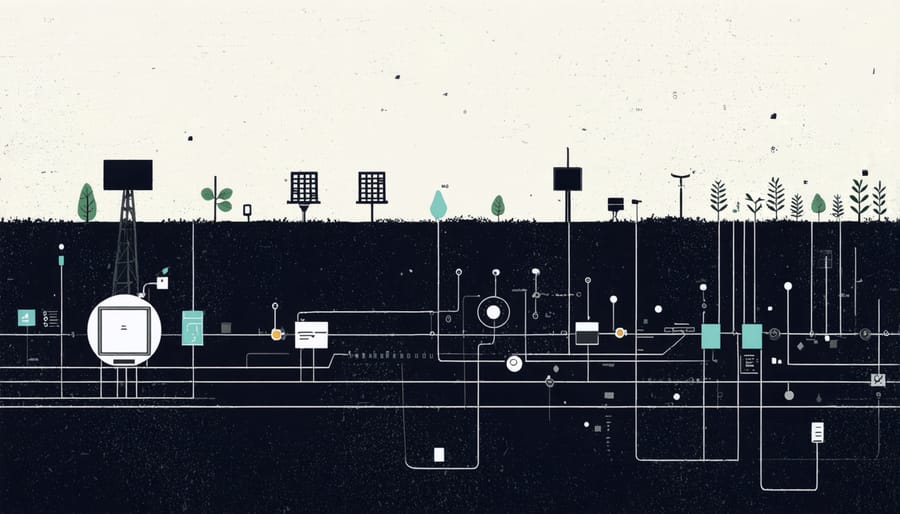
Soil Health Monitoring
Digital soil monitoring solutions funded through the rural digital opportunity program are revolutionizing how Alberta farmers maintain and improve their soil health. Smart sensors placed strategically across fields provide real-time data on moisture levels, nutrient content, and pH balance, enabling farmers to make informed decisions about irrigation and fertilization.
Take the example of Sarah Thompson, a third-generation farmer near Lethbridge, who implemented soil monitoring technology across her 800-hectare operation. Using connected sensors and a user-friendly mobile app, she reduced water usage by 30% while maintaining optimal growing conditions.
The funding program covers up to 75% of costs for soil monitoring equipment, including wireless sensors, data loggers, and integration software. These tools can detect early warning signs of soil degradation, track organic matter content, and measure essential micronutrients. Many Alberta farmers report that digital soil monitoring has helped them reduce input costs while improving crop yields.
Local agricultural extension offices provide training and support for implementing these systems, ensuring farmers can maximize the benefits of their digital soil monitoring investment.
The Rural Digital Opportunity Fund represents a transformative step forward for Canadian agriculture, offering farmers across Alberta and beyond the tools they need to modernize their operations. As we’ve seen through successful implementations, digital funding has already enabled numerous farms to adopt precision agriculture technologies, improve connectivity, and enhance their operational efficiency. The next critical steps for farmers include identifying suitable funding opportunities, preparing comprehensive digital transformation plans, and collaborating with local agricultural organizations to strengthen applications. By embracing these digital opportunities, our farming communities can build more resilient, sustainable, and profitable operations for future generations. The time to act is now – connect with your local agricultural extension office, explore available funding options, and take the first step toward digital transformation on your farm.


